Milanese Risotto
In Milan province ‘Risotto alla Milanese’ is a real institution. It’s impossible to have avoided ever tasting it and, above all, inconceivable not to know how to prepare it. Here we present the original recipe, which includes the addition of bone marrow, which you should have if you are also making ‘Ossibuchi alla Milanese’, and a little fat from some roast meat, which is optional. The real Milanese eat it with a spoon. The ‘Brianza’ and the ‘milanes arios’ douse the rice with red wine before adding the broth, so to make up for the absence of roast meat fat, which will not be available except on special occasions, because their roast meat is often cooked with wine. This use has spread as the ‘Milanese style’. It’s also important to form a ‘wave’ - that is, where all the grains of rice are smoothly connected together. And this is the basis for making other recipes: ‘salted’ risotto; baked rice ‘pie’ with roast pigeons, ‘filoni’, sweetbreads and dried mushrooms - cooked separately - and truffles; and risotto croquettes, breaded and fried in butter. For some of these preparations we recommend combining the risotto with one or two whole eggs.
Ingredients
-
butter 50 grams + some butter to make it creamy
-
onions A white onion
-
White wine Dry, to deglaze and reduce

Send the recipe
Preparation
Place the bone marrow, butter, any juices or gravy from a roast, and thinly sliced onion in a saucepan; let them cook gently over a low heat until they take on a golden colour. Add the rice and stir it well so it absorbs the seasoning. At this point, deglaze with white wine and turn up the heat. Keep stirring with a wooden spoon, then start to add the boiling stock – real stock, not from a stock cube - over the rice, one ladle at a time. As the stock evaporates and is absorbed, continue to cook it over a high flame, adding more ladles of stock until cooked, being careful that the rice remains ‘al dente’. When it is two-thirds cooked, add the saffron. Please note that if using saffron threads, you add it two-thirds of the way through to give it a chance to melt, but if it is in powder form it is better to add it at the end of cooking so as not to lose its fragrance. Finally add a knob of butter and Parmesan. Stir well and serve.
Step by step
|
View the step by step
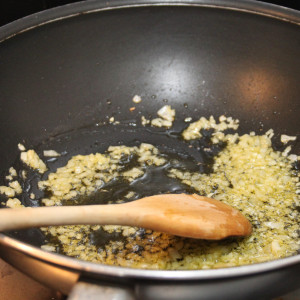
|
Put the bone marrow, the butter, the roast fat, and the finely chopped onion in a saucepan
|
|
View the step by step
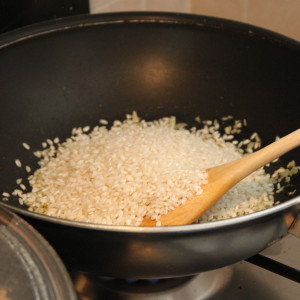
|
Simmer gently over low heat until the onions take on a golden colour. Add the rice and stir it well so that it can absorb the seasoning.
|
|
View the step by step
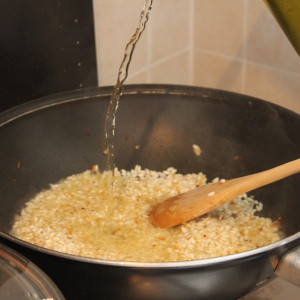
|
At this point, add the white wine, raise the heat, and reduce
|
|
View the step by step
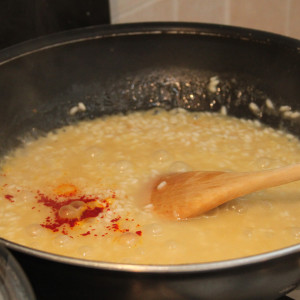
|
Add the stock and stir with a wooden spoon. When two-thirds done, add the saffron strands
|
|
View the step by step
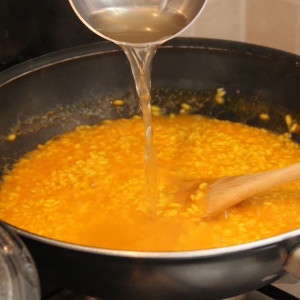
|
Cook until ready, adding the stock one ladle at a time
|
|
View the step by step
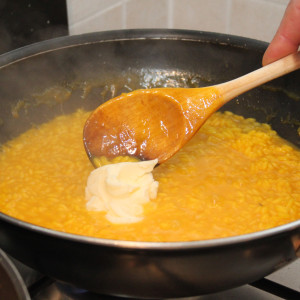
|
Two minutes before turning off the heat, whisk in some butter
|
|
View the step by step
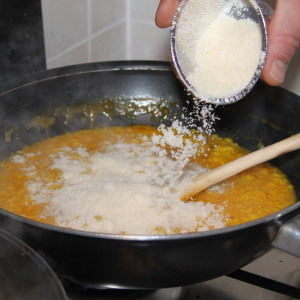
|
Add the Parmesan
|
|
View the step by step
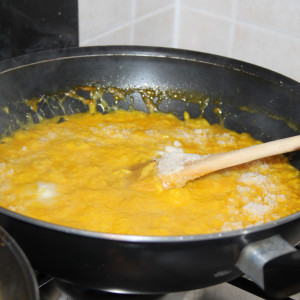
|
Mix well
|
|
View the step by step

|
Plate up the risotto
|
|
View the step by step

|
Spread the risotto by patting the underside of the plate: the texture should be creamy and smooth.
|
|
View the step by step
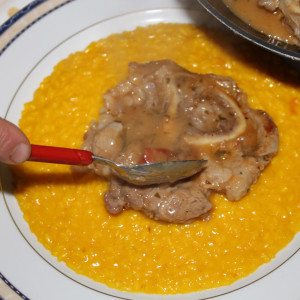
|
Serve with an excellent ‘Ossobuco alla Milanese’
|




